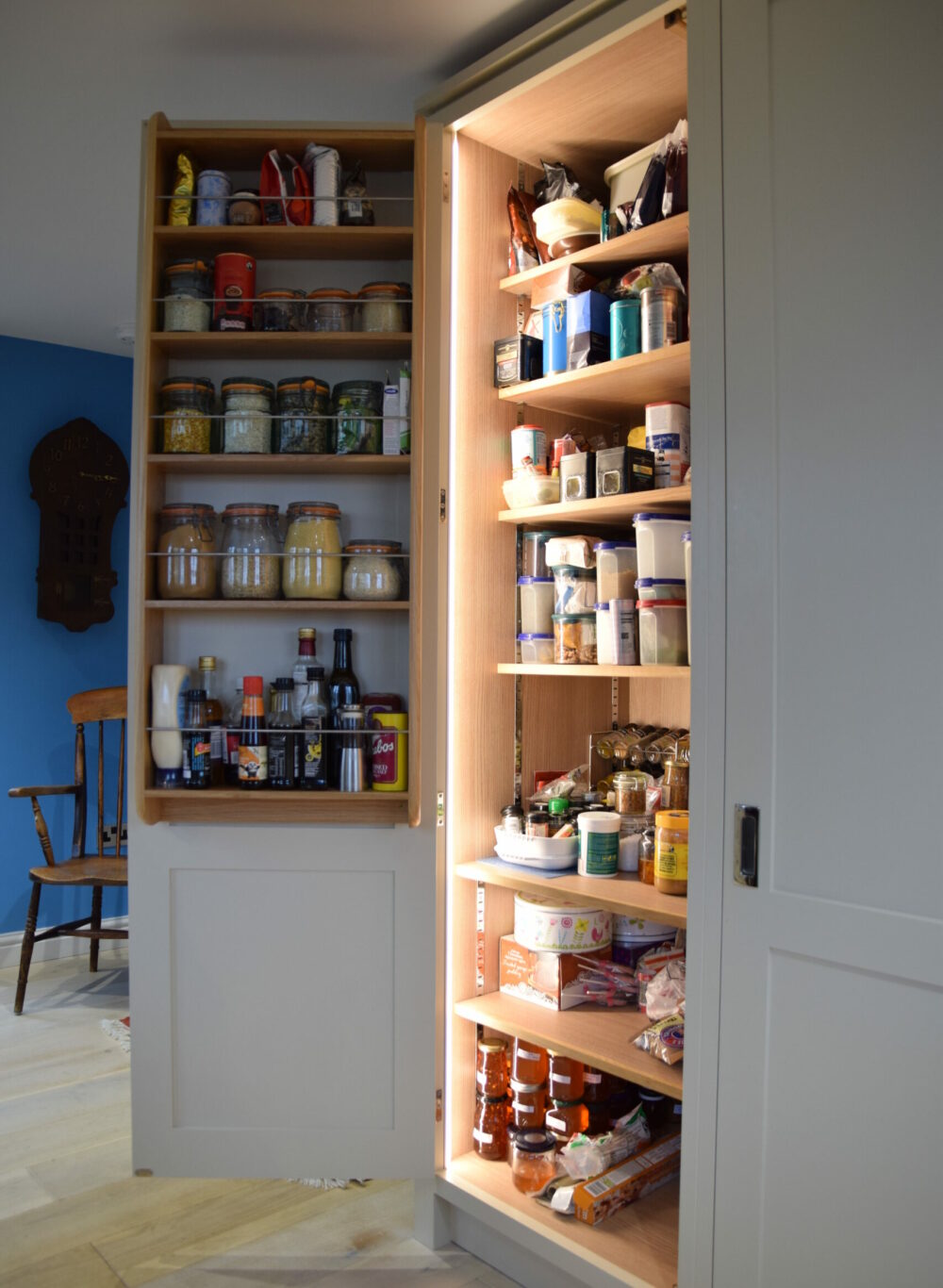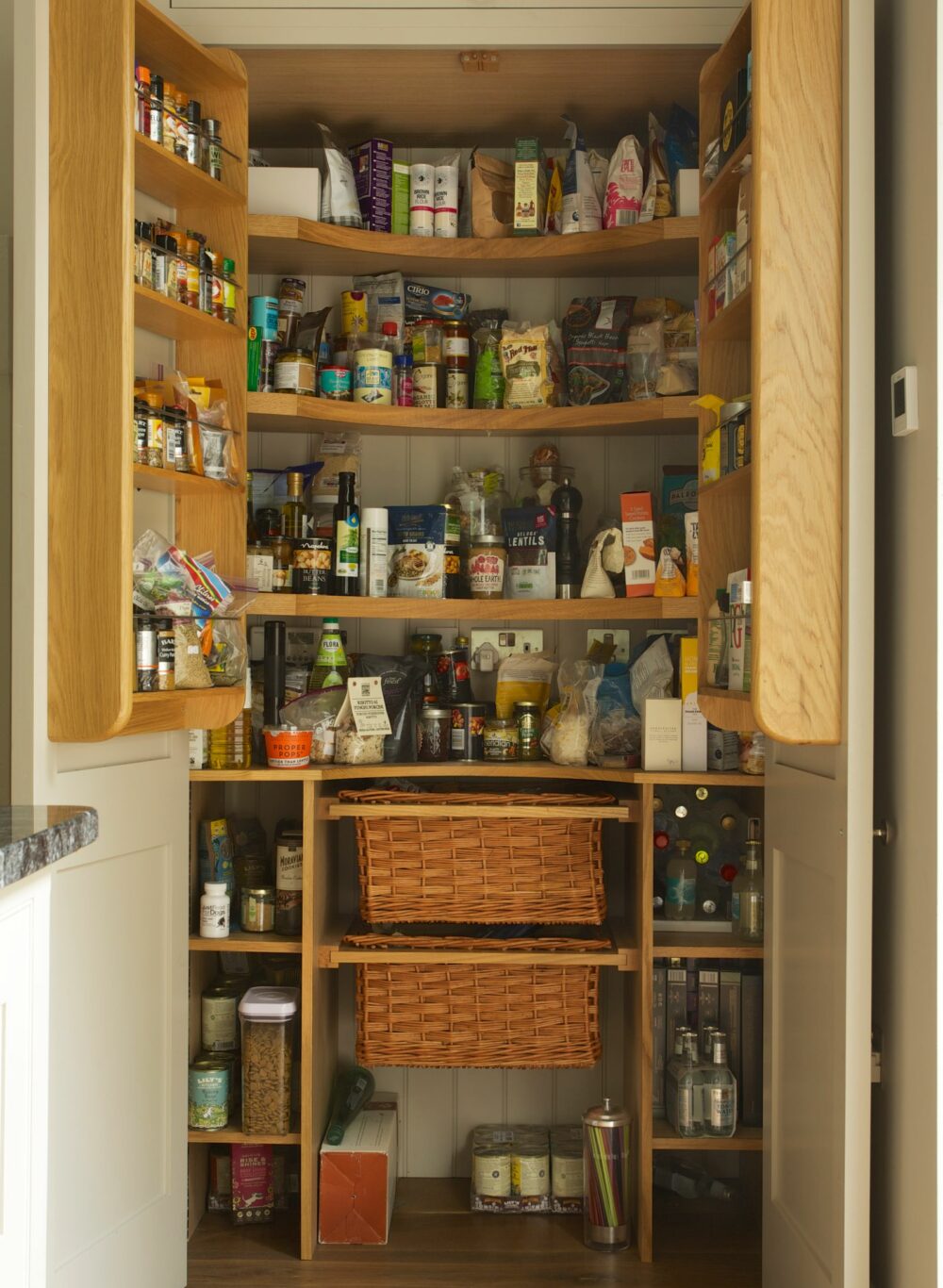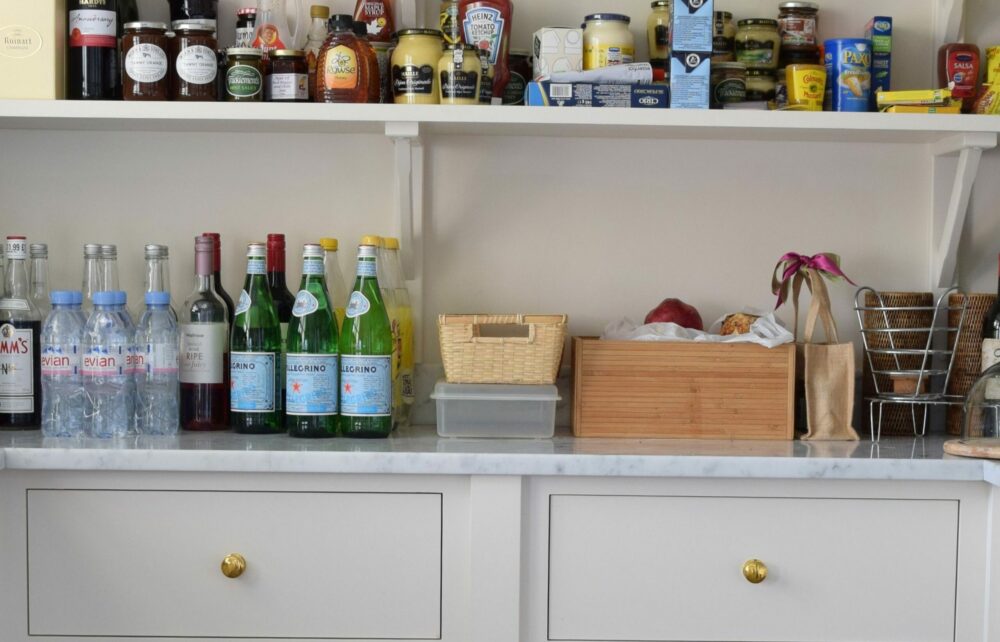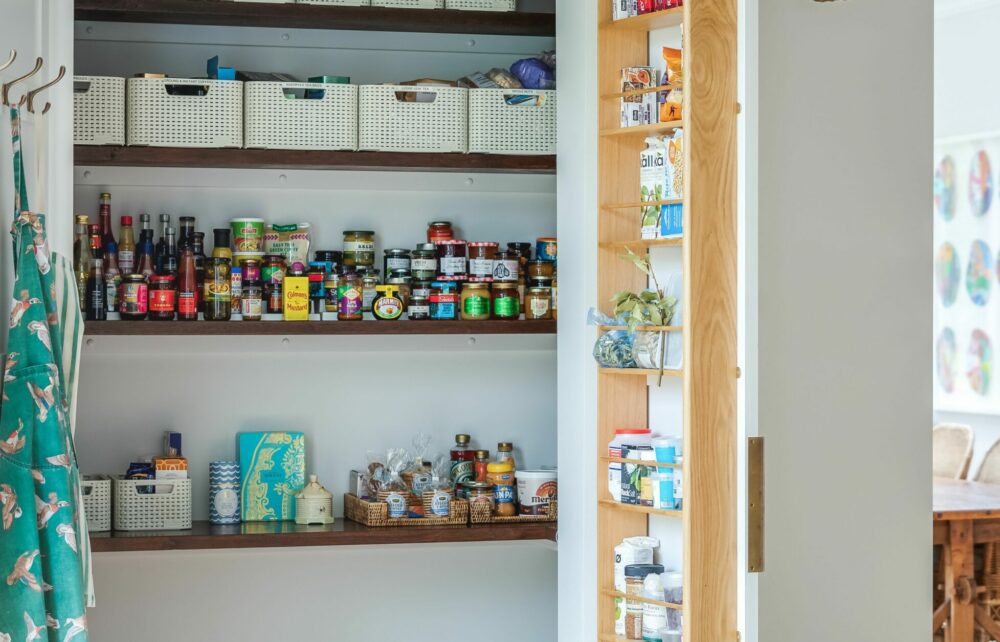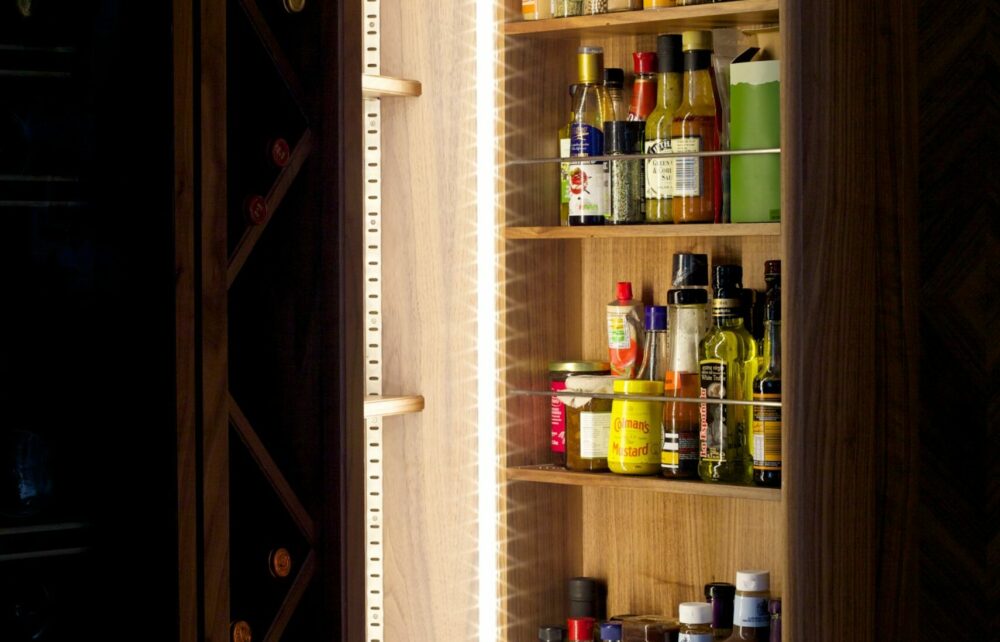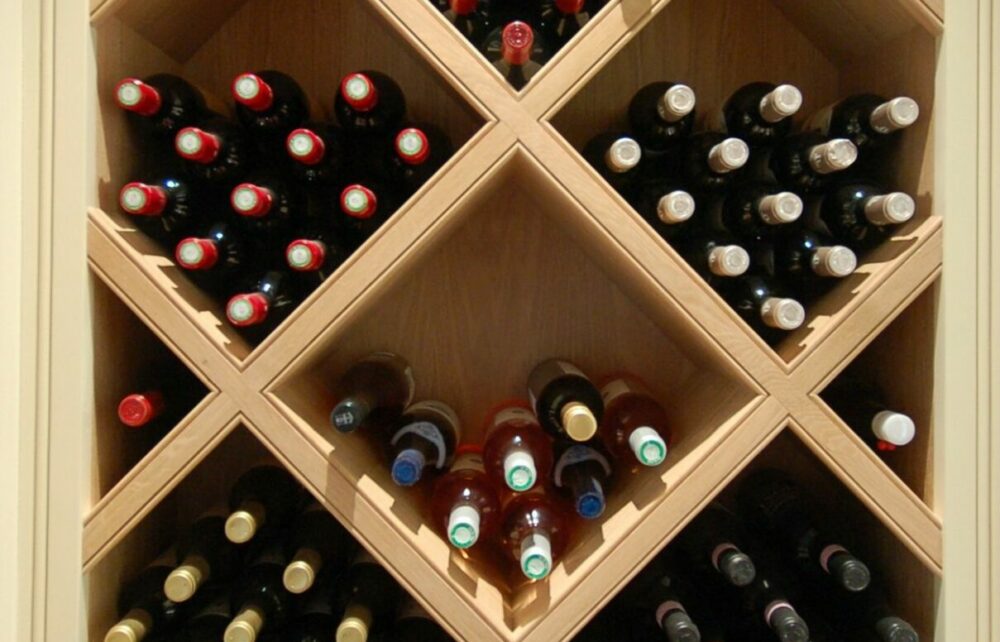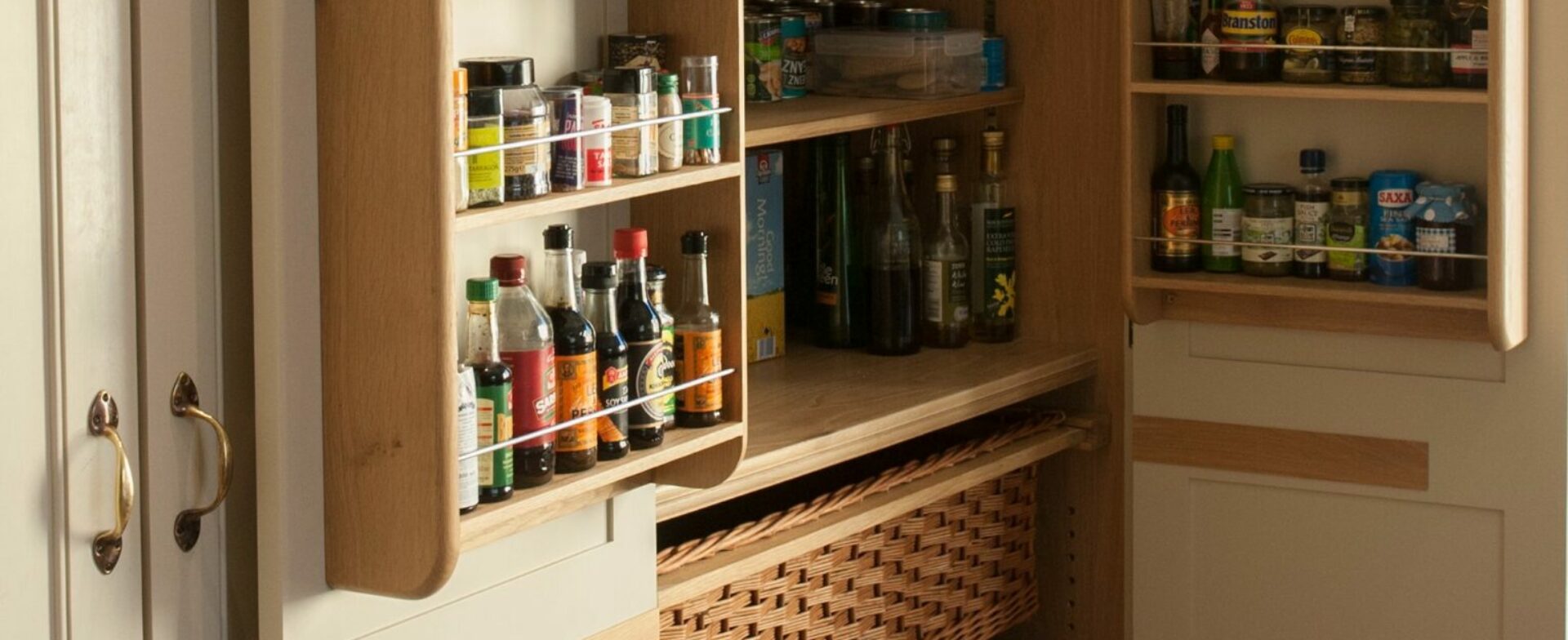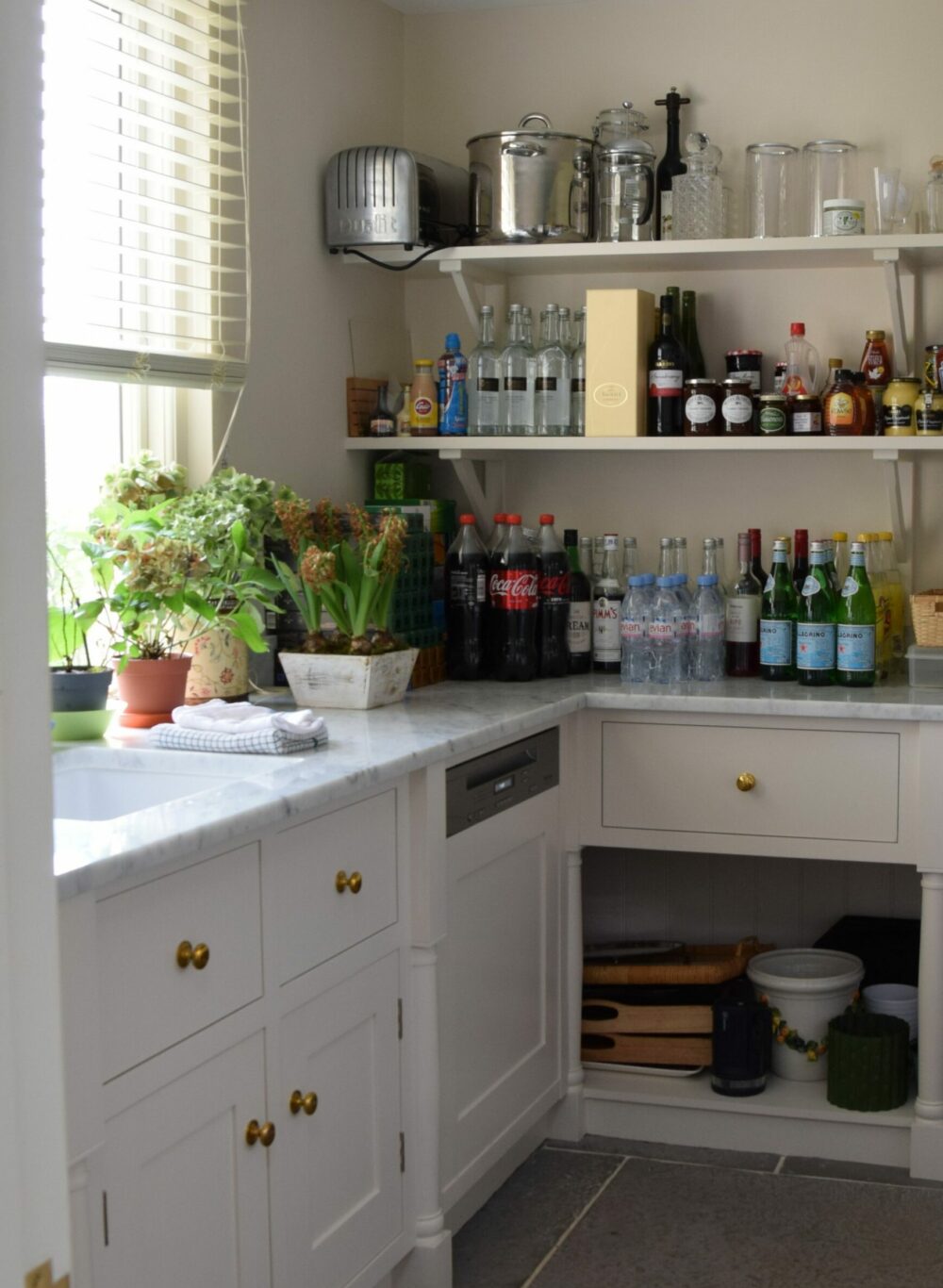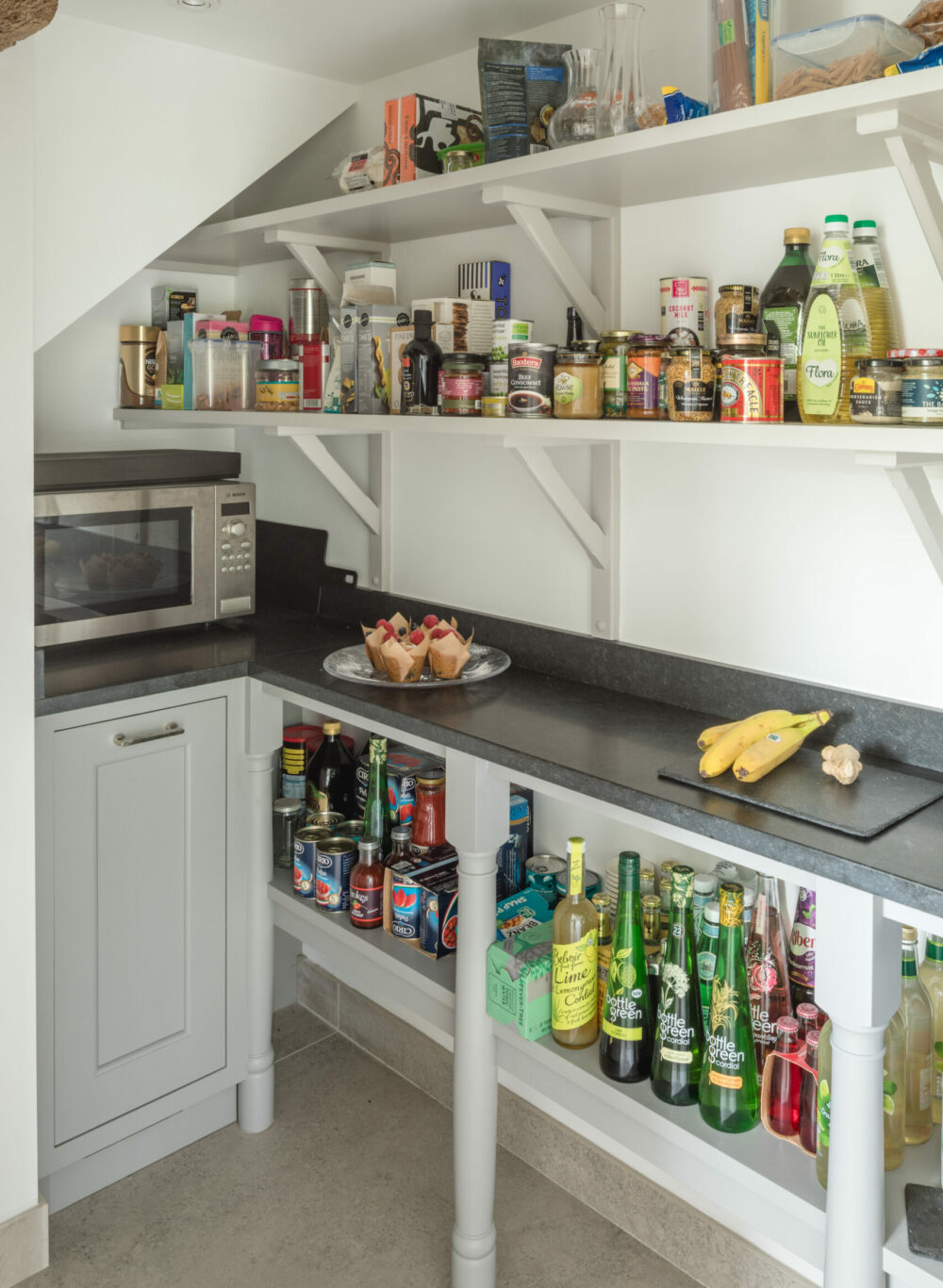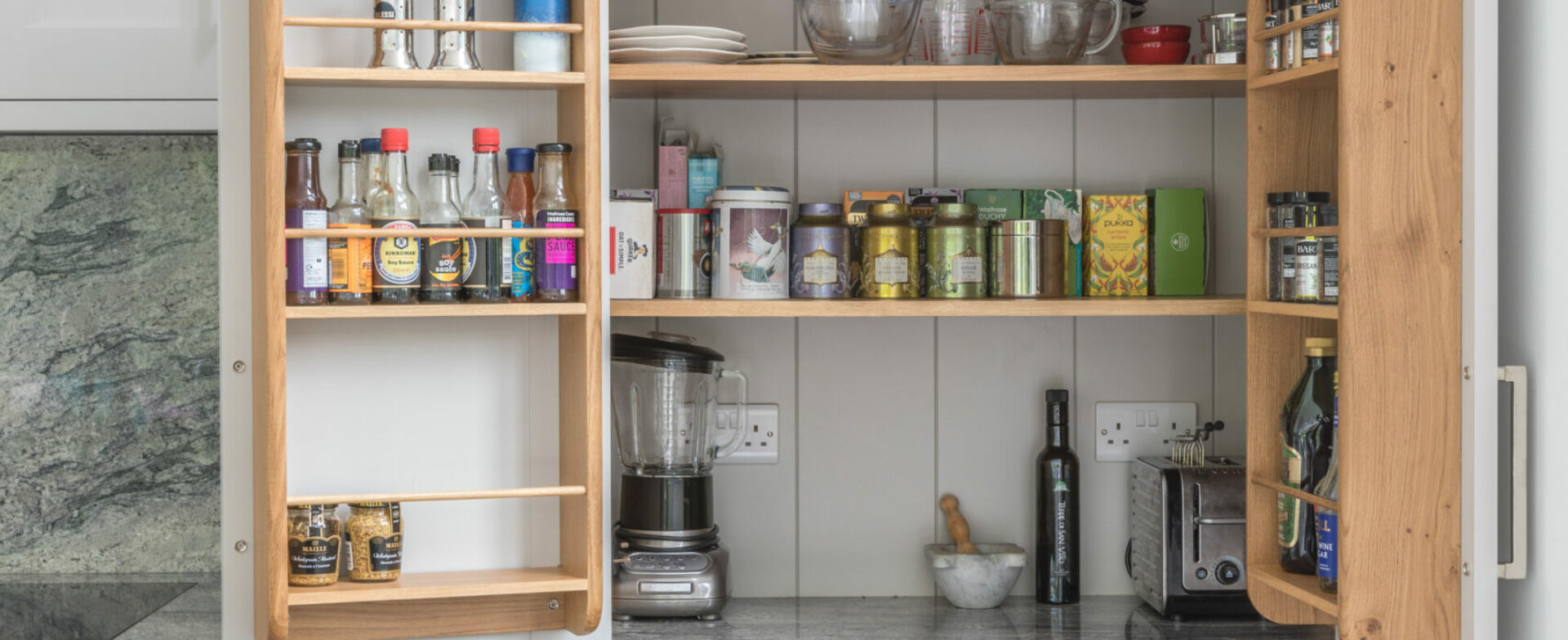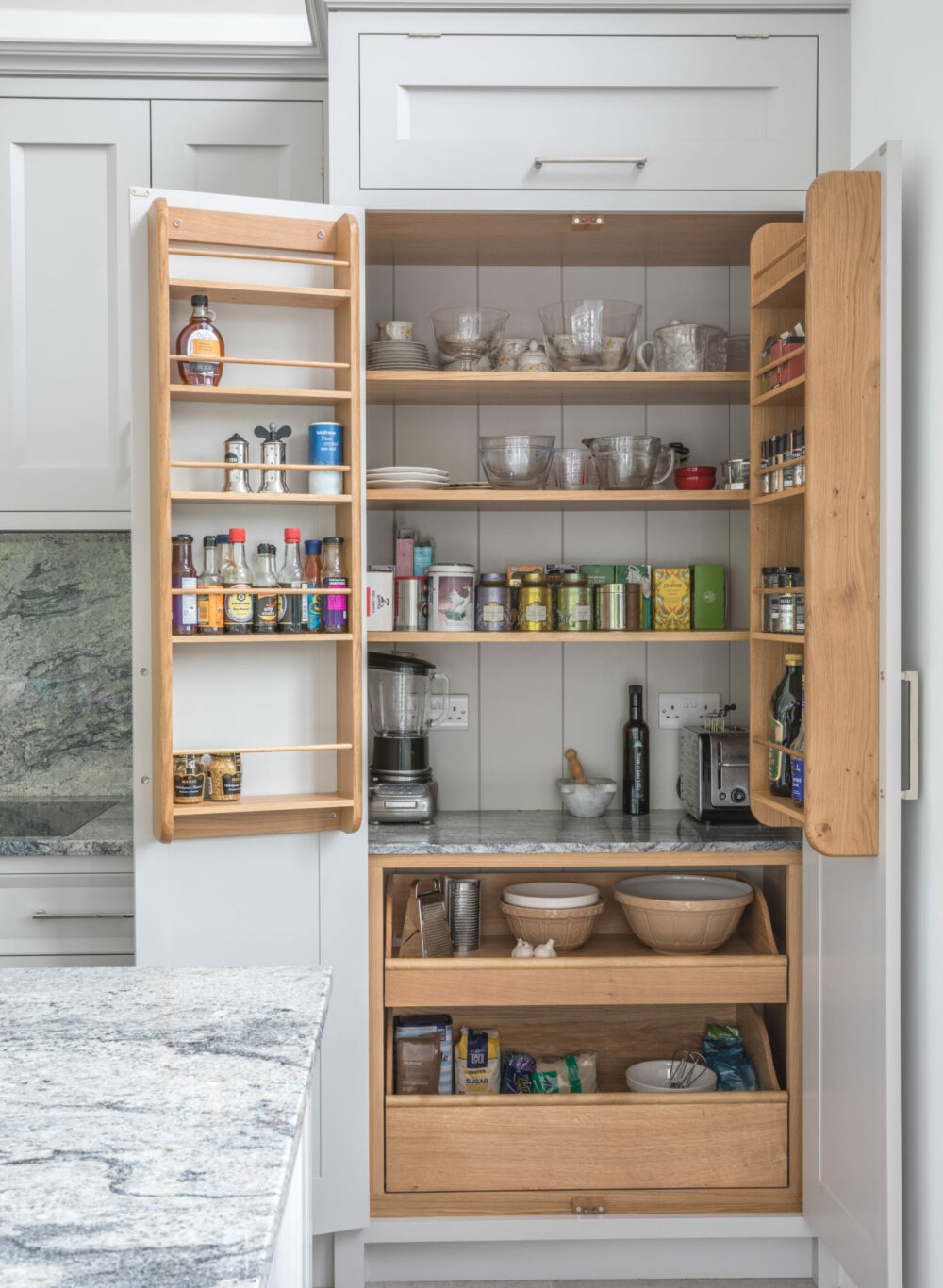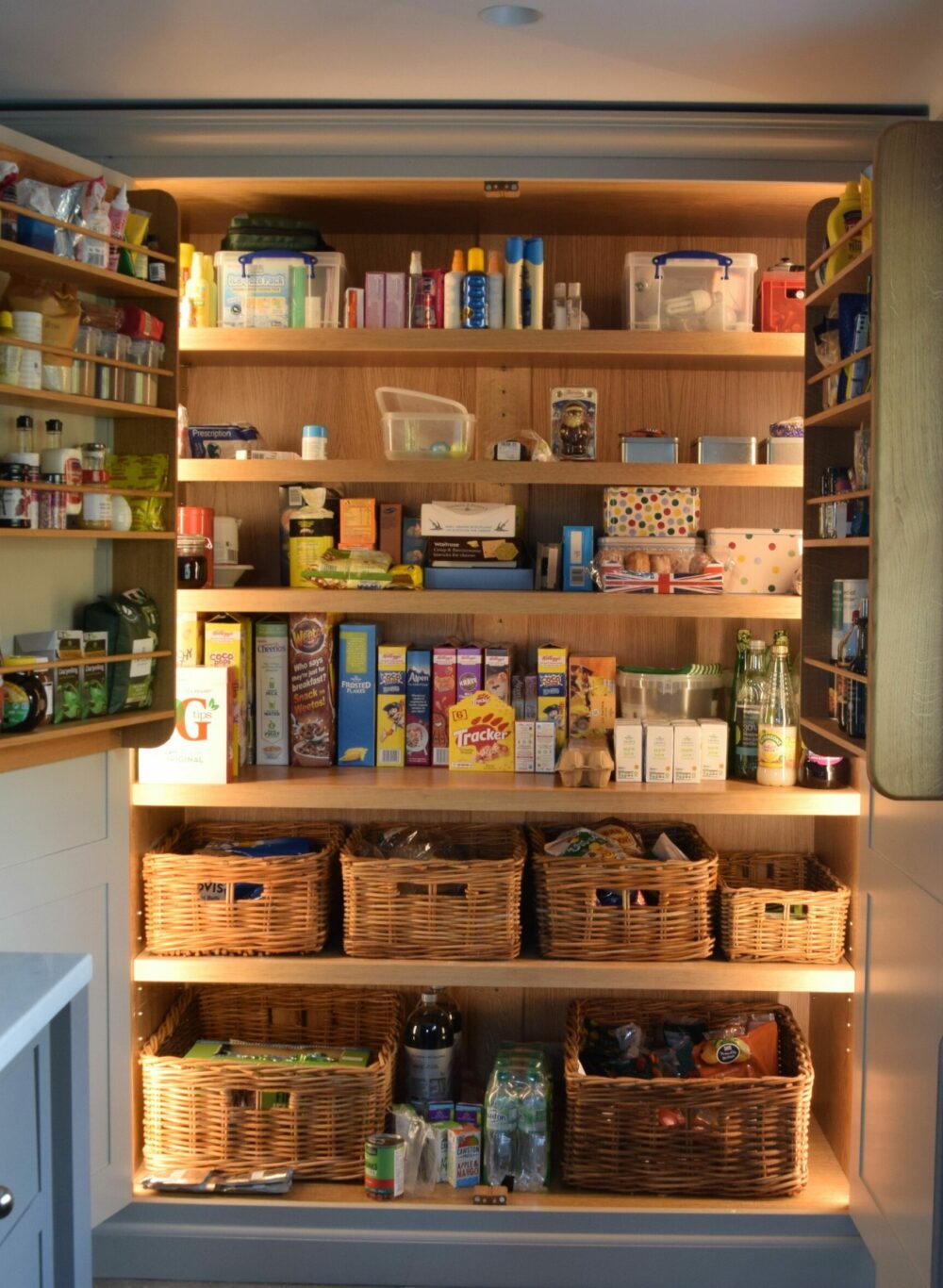Journal
Clearly storage space is critical in the design of any kitchen, and a Walk-In Pantry or Larder Cabinet can be an essential part of the plan.
Each offer significant space to store sufficient provisions to avoid the need to pop to the shops every five minutes. However there is a big difference between the two; and ultimately the size of your room will dictate which one you can choose.
Historically English country houses employed a team of staff “downstairs” to run the domestic side of the home. Each were allocated a specific role, and amongst these roles there was a well-defined hierarchy, with the Butler and Housekeeper being amongst the most important. Each domestic task was divided amongst the team of servants and the house ran like clockwork, with the Butler overseeing the pantry.
Today modern kitchen appliances have allowed us to be almost as efficient as a team of staff, and we now (mostly!) run our own homes. Unlike in the 18th and 19th centuries the kitchen is no longer on the cooler North side of the house; larger country houses are now being re-modelled to allow the kitchen to be at the centre of the home with ante-rooms leading from this main hub. Amongst these ante-rooms a walk in pantry still plays an important role.
WALK-IN PANTRY
A walk-in pantry will store everything in one dedicated space. No more to-ing and fro-ing between small cupboards to find ingredients. A well designed kitchen will allocate the pantry next to the kitchen, and by reducing the footprint of your main kitchen to accommodate a walk-in pantry will allow for a more streamlined kitchen in the long run, freeing up space in the main design – and head space also!
Incorporated into the design of the pantry are usually wall shelves deep enough to store large and small jars and tins. A cool marble or quartz counter top can act as a space to store small appliances, or as additional storage space at busy times for puddings and cheese where they can be stored until needed.
Depending on your needs, under the countertop you can choose between drawers, cupboards, open shelves or baskets. While cupboards and drawers can hide unsightly items, some open shelving can help when storing more bulky items such as wine or large bags of flour.
Pros:
A place for everything and everything in its place – the luxury of bespoke storage.
A walk-in pantry has more storage capacity and are often designed as an ante-room to the main kitchen.
Thanks to multiple open shelves they are big enough to store all manner of kitchen ingredients, cookbooks, pots, pans, serve-ware, gadgets and small appliances. Walk-in Pantries can house microwaves, coffee machines, toasters, juicers and fryers. Freeing up counter space within the main kitchen and housing those appliances until needed.
They can be better organised, allowing you to sort items by product group and with a selection of different shelf heights they can help when trying to locate certain items.
Moreover a walk-in solution allows you to create a bespoke design tailored to your specific needs, whether they be for an extensive emporium of exotic herbs and spices in jars, or a full home baking set-up.
Cons:
Storage is more spread out.
Pantries can often be located further away from the appliances, so gathering up the items you need to cook with may take longer. Some people prefer to have everyday items on hand.
They can require more upkeep. The more space you have the more you have to clean and de-clutter!
LARDER CABINET
In a more modest home there is still the demand for efficient storage for dry goods, small appliances and all manner of ingredients. To address this the modern equivalent of the walk in pantry is a Larder Cabinet. It still allocates a specific space for the storage of ingredients, on a more modest scale.
It is a cross between a kitchen cupboard and storage room, with the ability to store a range of food in a combination of drawers or pull-out baskets, shelves and racks. Bespoke design will allow for adjustable shelving in the cabinet, internal baskets or drawers beneath. Shelving racks on the inside of the doors are essential for all manner of small jars, bottles and tins.
A successful larder is one that is organised, works for you personally, and makes the best use of the space. Aside from the practicalities of having a larder cupboard, they also add a beautiful design feature to your kitchen. From the outside they can blend in with your other cabinets, but when you open them, they reveal a wealth of elegant storage features.
Pros:
Larder Cabinets don’t take up very much space. They are an efficient storage solution for small or medium size kitchen
They can be incorporated in to the overall cabinet design for the kitchen allowing it to be a more central cabinet within the space. This will cut down on time spent walking to and from a walk-in pantry.
Placing the Larder Cabinet next to the fridge will make it extremely efficient when unloading shopping.
They are more compact and therefore you don’t have to spend unnecessary time looking for items within a large space.
Pull out drawers for snacks allows you to see all the items at once.
Cons:
Storage space is limited, often only allowing storage for ingredients, not small appliances
Avid cooks may require a larder cupboard for ingredients and another just for all the small appliances.
They are more expensive than standard base or wall cabinets as they tend to incorporate more features such as spice racks and baskets or drawers.
They take away counter space as they tend to be floor to ceiling in height, compared to individual base cabinets and wall cabinets that sit above and below the counter.
Whichever your choice, be assured Guild Anderson are passionate about storage!


